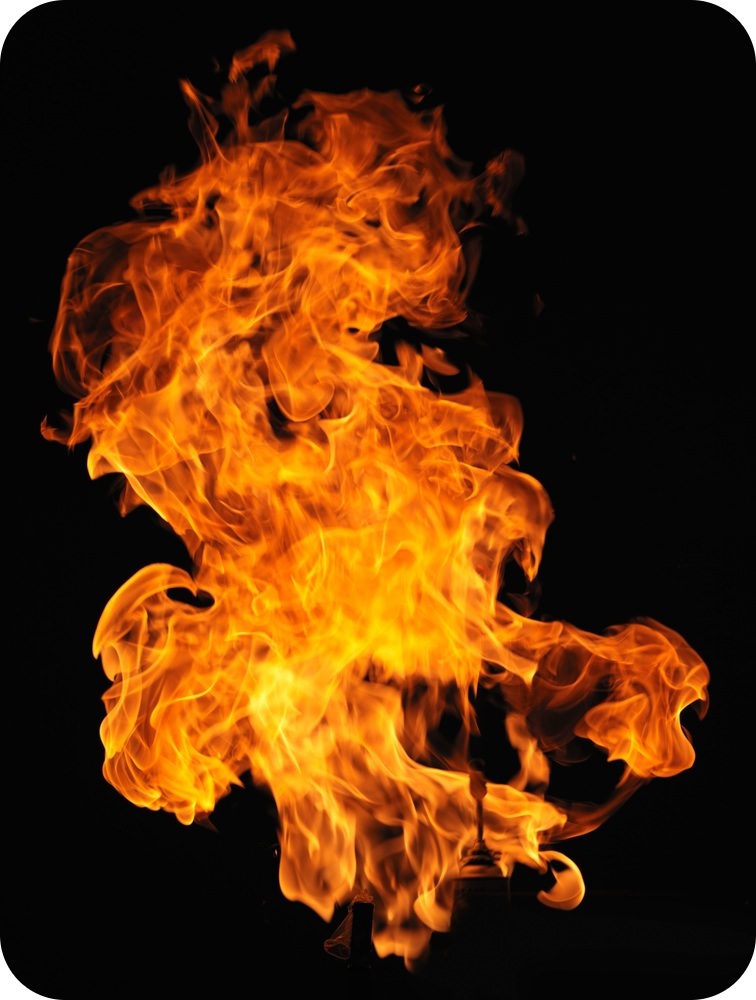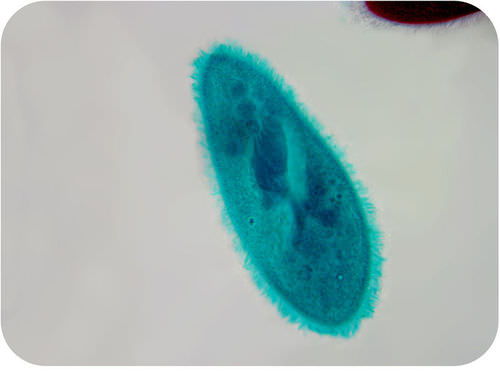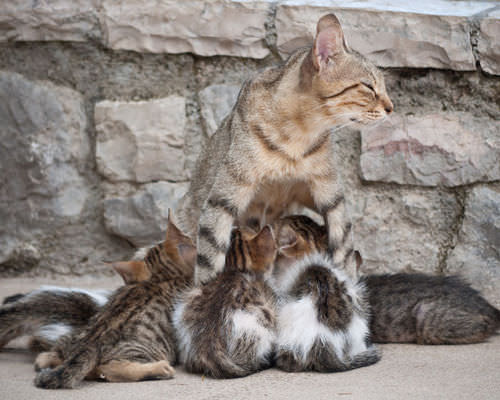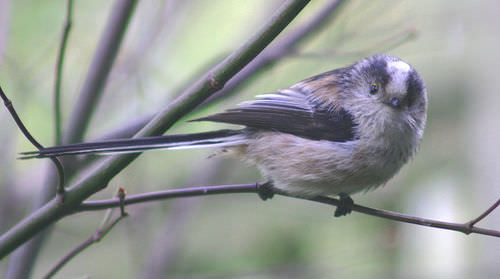1.8: Characteristics of Life
- Page ID
- 12158
\( \newcommand{\vecs}[1]{\overset { \scriptstyle \rightharpoonup} {\mathbf{#1}} } \)
\( \newcommand{\vecd}[1]{\overset{-\!-\!\rightharpoonup}{\vphantom{a}\smash {#1}}} \)
\( \newcommand{\id}{\mathrm{id}}\) \( \newcommand{\Span}{\mathrm{span}}\)
( \newcommand{\kernel}{\mathrm{null}\,}\) \( \newcommand{\range}{\mathrm{range}\,}\)
\( \newcommand{\RealPart}{\mathrm{Re}}\) \( \newcommand{\ImaginaryPart}{\mathrm{Im}}\)
\( \newcommand{\Argument}{\mathrm{Arg}}\) \( \newcommand{\norm}[1]{\| #1 \|}\)
\( \newcommand{\inner}[2]{\langle #1, #2 \rangle}\)
\( \newcommand{\Span}{\mathrm{span}}\)
\( \newcommand{\id}{\mathrm{id}}\)
\( \newcommand{\Span}{\mathrm{span}}\)
\( \newcommand{\kernel}{\mathrm{null}\,}\)
\( \newcommand{\range}{\mathrm{range}\,}\)
\( \newcommand{\RealPart}{\mathrm{Re}}\)
\( \newcommand{\ImaginaryPart}{\mathrm{Im}}\)
\( \newcommand{\Argument}{\mathrm{Arg}}\)
\( \newcommand{\norm}[1]{\| #1 \|}\)
\( \newcommand{\inner}[2]{\langle #1, #2 \rangle}\)
\( \newcommand{\Span}{\mathrm{span}}\) \( \newcommand{\AA}{\unicode[.8,0]{x212B}}\)
\( \newcommand{\vectorA}[1]{\vec{#1}} % arrow\)
\( \newcommand{\vectorAt}[1]{\vec{\text{#1}}} % arrow\)
\( \newcommand{\vectorB}[1]{\overset { \scriptstyle \rightharpoonup} {\mathbf{#1}} } \)
\( \newcommand{\vectorC}[1]{\textbf{#1}} \)
\( \newcommand{\vectorD}[1]{\overrightarrow{#1}} \)
\( \newcommand{\vectorDt}[1]{\overrightarrow{\text{#1}}} \)
\( \newcommand{\vectE}[1]{\overset{-\!-\!\rightharpoonup}{\vphantom{a}\smash{\mathbf {#1}}}} \)
\( \newcommand{\vecs}[1]{\overset { \scriptstyle \rightharpoonup} {\mathbf{#1}} } \)
\( \newcommand{\vecd}[1]{\overset{-\!-\!\rightharpoonup}{\vphantom{a}\smash {#1}}} \)
\(\newcommand{\avec}{\mathbf a}\) \(\newcommand{\bvec}{\mathbf b}\) \(\newcommand{\cvec}{\mathbf c}\) \(\newcommand{\dvec}{\mathbf d}\) \(\newcommand{\dtil}{\widetilde{\mathbf d}}\) \(\newcommand{\evec}{\mathbf e}\) \(\newcommand{\fvec}{\mathbf f}\) \(\newcommand{\nvec}{\mathbf n}\) \(\newcommand{\pvec}{\mathbf p}\) \(\newcommand{\qvec}{\mathbf q}\) \(\newcommand{\svec}{\mathbf s}\) \(\newcommand{\tvec}{\mathbf t}\) \(\newcommand{\uvec}{\mathbf u}\) \(\newcommand{\vvec}{\mathbf v}\) \(\newcommand{\wvec}{\mathbf w}\) \(\newcommand{\xvec}{\mathbf x}\) \(\newcommand{\yvec}{\mathbf y}\) \(\newcommand{\zvec}{\mathbf z}\) \(\newcommand{\rvec}{\mathbf r}\) \(\newcommand{\mvec}{\mathbf m}\) \(\newcommand{\zerovec}{\mathbf 0}\) \(\newcommand{\onevec}{\mathbf 1}\) \(\newcommand{\real}{\mathbb R}\) \(\newcommand{\twovec}[2]{\left[\begin{array}{r}#1 \\ #2 \end{array}\right]}\) \(\newcommand{\ctwovec}[2]{\left[\begin{array}{c}#1 \\ #2 \end{array}\right]}\) \(\newcommand{\threevec}[3]{\left[\begin{array}{r}#1 \\ #2 \\ #3 \end{array}\right]}\) \(\newcommand{\cthreevec}[3]{\left[\begin{array}{c}#1 \\ #2 \\ #3 \end{array}\right]}\) \(\newcommand{\fourvec}[4]{\left[\begin{array}{r}#1 \\ #2 \\ #3 \\ #4 \end{array}\right]}\) \(\newcommand{\cfourvec}[4]{\left[\begin{array}{c}#1 \\ #2 \\ #3 \\ #4 \end{array}\right]}\) \(\newcommand{\fivevec}[5]{\left[\begin{array}{r}#1 \\ #2 \\ #3 \\ #4 \\ #5 \\ \end{array}\right]}\) \(\newcommand{\cfivevec}[5]{\left[\begin{array}{c}#1 \\ #2 \\ #3 \\ #4 \\ #5 \\ \end{array}\right]}\) \(\newcommand{\mattwo}[4]{\left[\begin{array}{rr}#1 \amp #2 \\ #3 \amp #4 \\ \end{array}\right]}\) \(\newcommand{\laspan}[1]{\text{Span}\{#1\}}\) \(\newcommand{\bcal}{\cal B}\) \(\newcommand{\ccal}{\cal C}\) \(\newcommand{\scal}{\cal S}\) \(\newcommand{\wcal}{\cal W}\) \(\newcommand{\ecal}{\cal E}\) \(\newcommand{\coords}[2]{\left\{#1\right\}_{#2}}\) \(\newcommand{\gray}[1]{\color{gray}{#1}}\) \(\newcommand{\lgray}[1]{\color{lightgray}{#1}}\) \(\newcommand{\rank}{\operatorname{rank}}\) \(\newcommand{\row}{\text{Row}}\) \(\newcommand{\col}{\text{Col}}\) \(\renewcommand{\row}{\text{Row}}\) \(\newcommand{\nul}{\text{Nul}}\) \(\newcommand{\var}{\text{Var}}\) \(\newcommand{\corr}{\text{corr}}\) \(\newcommand{\len}[1]{\left|#1\right|}\) \(\newcommand{\bbar}{\overline{\bvec}}\) \(\newcommand{\bhat}{\widehat{\bvec}}\) \(\newcommand{\bperp}{\bvec^\perp}\) \(\newcommand{\xhat}{\widehat{\xvec}}\) \(\newcommand{\vhat}{\widehat{\vvec}}\) \(\newcommand{\uhat}{\widehat{\uvec}}\) \(\newcommand{\what}{\widehat{\wvec}}\) \(\newcommand{\Sighat}{\widehat{\Sigma}}\) \(\newcommand{\lt}{<}\) \(\newcommand{\gt}{>}\) \(\newcommand{\amp}{&}\) \(\definecolor{fillinmathshade}{gray}{0.9}\)
Is fire alive?
Fire can grow. Fire needs fuel and oxygen. But fire is not a form of life, although it shares a few traits with some living things. How can you distinguish between non-living and living things?
The Characteristics of Life
How do you define a living thing? What do mushrooms, daisies, cats, and bacteria have in common? All of these are living things, or organisms. It might seem hard to think of similarities among such different organisms, but they actually have many properties in common. Living organisms are similar to each other because all organisms evolved from the same common ancestor that lived billions of years ago.
All living organisms:
- Need energy to carry out life processes.
- Are composed of one or more cells.
- Respond to their environment.
- Grow and reproduce.
- Maintain a stable internal environment.
Living Things Need Resources and Energy
Why do you eat everyday? To get energy. Energy is the ability to do work. Without energy, you could not do any "work." Though not doing any "work" may sound nice, the "work" fueled by energy includes everyday activities, such as walking, writing, and thinking. But you are not the only one who needs energy. In order to grow and reproduce and carry out the other process of life, all living organisms need energy. But where does this energy come from?
The source of energy differs for each type of living thing. In your body, the source of energy is the food you eat. Here is how animals, plants, and fungi obtain their energy:
- All animals must eat in order to obtain energy. Animals also eat to obtain building materials. Animals eat plants and other animals.
- Plants don’t eat. Instead, they use energy from the sun to make their "food" through the process of photosynthesis.
- Mushrooms and other fungi obtain energy from other organisms. That’s why you often see fungi growing on a fallen tree; the rotting tree is their source of energy (Figure below).
Since plants harvest energy from the sun and other organisms get their energy from plants, nearly all the energy of living things initially comes from the sun.

Living Things Are Made of Cells
If you zoom in very close on a leaf of a plant, or on the skin on your hand, or a drop of blood, you will find cells (Figure below). Cells are the smallest structural and functional unit of all living organisms. Most cells are so small that they are usually visible only through a microscope. Some organisms, like bacteria, plankton that live in the ocean, or the Paramecium, shown in Figure below, are unicellular, made of just one cell. Other organisms have millions, billions, or trillions of cells.
All cells have at least some structures in common, such as ribosomes, which are the sites where proteins are made. All cells also have DNA and proteins. You can clearly see the blue nucleus in these blood vessel cells (Figure below). The nucleus can be described as the "information center," containing the instructions (DNA) for making all the proteins in a cell, as well as how much of each protein to make. The nucleus is also the main distinguishing feature between the two general categories of cell; cells that lack a nucleus are known as prokaryotic cells.
Although the cells of different organisms are built differently, they all have certain general functions. Every cell must get energy from food, be able to grow and divide, and respond to its environment. More about cell structure and function will be discussed in additional concepts.


Living Organisms Respond to their Environment
All living organisms are able to react to something important or interesting in their external environment. For example, living organisms constantly respond to their environment. They respond to changes in light, heat, sound, and chemical and mechanical contact. Organisms have means for receiving information, such as eyes, ears, taste buds, or other structures.
Living Things Grow and Reproduce
All living things reproduce to make the next generation. Organisms that do not reproduce will go extinct. As a result, there are no species that do not reproduce (Figure below). Some organisms reproduce asexually (asexual reproduction), especially single-celled organisms, and make identical copies (or clones) of themselves. Other organisms reproduce sexually (sexual reproduction), combining genetic information from two parents to make genetically unique offspring.

Living Things Maintain Stable Internal Conditions
When you are cold, what does your body do to keep warm? You shiver to warm up your body. When you are too warm, you sweat to release heat. When any living organism gets thrown off balance, its body or cells help it return to normal. In other words, living organisms have the ability to keep a stable internal environment. Maintaining a balance inside the body or cells of organisms is known as homeostasis. Like us, many animals have evolved behaviors that control their internal temperature. A lizard may stretch out on a sunny rock to increase its internal temperature, and a bird may fluff its feathers to stay warm (Figure below).

Summary
- Living things are called organisms.
- All living organisms need energy to carry out life processes, are composed of one or more cells, respond to their environment, grow, reproduce, and maintain a stable internal environment.
Explore More
Use the resource below to answer the questions that follow.
- Characteristics of Life at http://www.youtube.com/watch?v=gJd65_Xrxs4 (3:15)
- What are cell products? Do you think they should be included in characteristics of life? Why or why not?
- Are all responses to the environment immediately obvious? Be specific and explain your reasoning.
- Explain the concept of homeostasis. Give an example.
- At what level does life evolve?
Review
- Is a crystal alive? Why or why not?
- What is a cell?
- What is homeostasis?
- What are the two forms of reproduction? Describe the examples in your response.

